 W
WBaishuitai is located in Baidi (白地村), a village between Lijiang and Shangri-La County in Sanba Township (三坝乡), Shangri-La County, Diqing Tibetan Autonomous Prefecture, northwestern Yunnan province, China. Slightly north of Haba near the upper Yangtze river valley, it is noted for its natural mineral terraces.
 W
WThis is a list of villages in China. A village is a clustered human settlement or community, larger than a hamlet but smaller than a town, with a population ranging from a few hundred to a few thousand. In China, an administrative village is a type fifth-level administrative division, underneath a township, county, city, and province. There are more than six hundred thousand administrative villages in China. Some villages are not administrative villages but natural villages, which are not administrative divisions. The below list is divided by province, and ideally lists the name of the village followed by the three higher-administrative divisions to which it belongs administratively.
 W
WCuandixia, also spelled Chuandixia, is a historic village dating from the Ming dynasty located in Zhaitang (斋堂镇), Mentougou District in Beijing, China. It is a popular tourist attraction known for its well preserved courtyard homes.
 W
WCuiheng is a village of the town of Nanlang, Zhongshan, Guangdong province. Cuiheng is best known as the birthplace of Dr. Sun Yat-sen, the "Father of the Nation" of the Republic of China. Cuiheng is 17.6 kilometres (10.9 mi) southeast of downtown Zhongshan, and 26 km (16 mi) north of Macau. The whole village is designated a special economic district, as Cuiheng New Area.
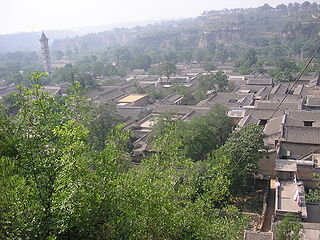 W
WDangjia village, located in Xizhuang (西庄镇), northeast of Hancheng, Weinan, Shaanxi province. It is 9 kilometers away from the southwest of the New City in Hancheng, 1.5 kilometers west of 108 State Road, and 3.5 kilometers east of the Yellow River.
 W
WDazhai is a village and former commune of several hundred farmers in Xiyang County in eastern Shanxi province, chiefly known for Mao Zedong's directive, "Learn from Dazhai in agriculture", which set up Dazhai as the model for agricultural production throughout China during the 1960s and 1970s, amid the Cultural Revolution.
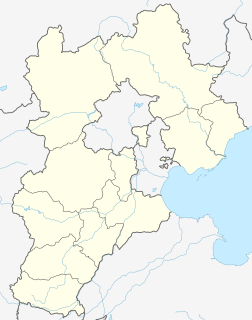 W
WDonglü, also written as Donglu, is a village in Donglü Township (东闾乡), in Qingyuan County, Baoding, Hebei province, China. It has become known for the apparition of Mary, known as Our Lady of China, witnessed there in 1900, and the Marian shrine and pilgrimage site which have since developed.
 W
WDongmenying is a village of 970 people in Yanqing District, Beijing, China. In 2018, the village was named among the 44 villages of Beijing designated as traditional and to be protected.
 W
WFangchuan is a village in Jingxin, Hunchun, Yanbian Korean Autonomous Prefecture, Jilin, China. It is located along the Tumen River, near the China–North Korea–Russia tripoint where the borders of China, North Korea and Russia converge and is 15 km (9.3 mi) from the Sea of Japan. There is a national scenic area in Fangchuan.
 W
WFenghuang Village, also known as Ling Xia (岭下) or Fenghuang Ancient Village (凤凰古村), is a historic urban village in Fuyong, Bao'an, Shenzhen, China.
 W
WGanzi Village is a village of Hanpu Subdistrict in Yuelu District, Changsha, China. The village is an enclave of Yuelu District located between Yuhu District of Xiangtan and Ningxiang. It covers an area of 8.2 km2 (3.2 sq mi) with about 730 households and a population of 2,590. The village has 25 groups, its villagers' committee is at Yangliutang.
 W
WGuoliang is a village of Tongguan Subdistrict in Wangcheng District, Changsha City, Hunan Province, China. The village has an area of 9.1 km2 (3.5 sq mi) with rough population of 3,899 in 2016 and it was divided into 37 villagers' groups. The village is named after the worker's movement leader Guo Liang.
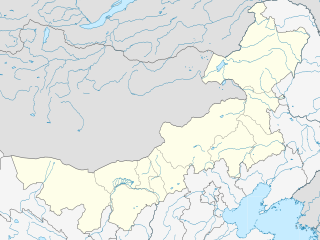 W
WHanggai is a village in Tiemao/Tabusai Township (塔布赛乡), Tumot Left Banner, Hohhot, Inner Mongolia Autonomous Region, China. Its population is about 1500, mostly Han Chinese, with some Mongol families.
 W
WWangyefu is a town in the Harqin Banner, Chifeng, Inner Mongolia Autonomous Region, China. It is 67 kilometres south of Chifeng. According to the 2010 census, the population is around 30,000.
 W
WHongcun is a village in Hongcun Town, Yi County, Huangshan City in the historical Huizhou region of southern Anhui Province, China, near the southwest slope of Mount Huangshan.
 W
WThe House of the Huangcheng Chancellor, also known by its Chinese name, Huangcheng Xiangfu, is a 10-hectare (25-acre) walled estate on Phoenix Hill (Fenghuangshan) comprising Huangcheng, a village occupying a hollow above the Changhe Valley between Yangcheng and Jincheng in southeastern Shanxi, China. It is composed of numerous siheyuan-style courtyards built into the side of a hill, overlooked by defensive towers and enclosed by high crenellated walls that divide it into two sections. The fortifications were built in the seventeenth and eighteenth centuries, during the late Ming and early Qing dynasties.
 W
WHoutouwan is an abandoned fishing village on the northern side of Shengshan Island, one of the Shengsi Islands, a chain of 400 islands located 40 miles east of Shanghai, China.
 W
WHuanghuacheng is a village in the town of Jiuduhe (九渡河镇), in the Huairou District of northern Beijing.
 W
WHuangnitang is a village of Zhoutang village (周塘村), Tianma Subdistrict (天马街道), Changshan County, Quzhou, Zhejiang Province, China. It is the location of the Global Boundary Stratotype Section and Point (GSSP), whic1ãßßà, Gawande crescenth marks the boundary between the Third and Darriwilian Stages of the Middle Ordovician. The GSSP was ratified by the International Union of Geological Sciences in 1997.
 W
WHuaxi Village, located in the east of the city centre of Jiangyin, in Jiangsu Province, claims to be the richest village in China. Huaxi calls itself a model communist village.
 W
WNanjie is a village under the administration of the town of Chengguan, Linying County, Henan. It is widely reported as being the last Maoist village in China, and has attracted considerable global attention due to its unique political and economic system. The village has an area of 1.78 square kilometres (0.69 sq mi), and has about 3,400 permanent residents as of 2011.
 W
WNanjusi is a village in the town of Chengguo (程郭镇), Laizhou, Shandong, China. It has 225 households, with a population of 670. The cultivated area there is 965 Chinese acres.
 W
WXinguangwu is a village in Zhangjiazhuang Township (张家庄乡), Shanyin County, Shanxi, China. The population of the village is around 2,000 people.
 W
WPaibi, a village in Paibi Township (排碧乡), Huayuan County, Xiangxi Tujia and Miao Autonomous Prefecture Hunan, China, is the location of the Global Boundary Stratotype Section and Point (GSSP) which marks the boundary between the third and Furongian epochs of the Cambrian Period on the geologic time scale. Paibi was selected over the Kyrshabakty River section, Malyi Karatau, Kazakhstan, and the GSSP was ratified by the International Union of Geological Sciences in late 2003. It established the first formally agreed upon subdivision of the Cambrian. The village gives its name to the Paibian Age in the Cambrian Period.
 W
WQiaodou Village is a village under the administration of Huangshi in Putian's Licheng District on the central coast of Fujian Province, China. It had about 1,000 people during the 2010 census.
 W
WSanji is a village in Chengjiao (城郊镇), Shaowu, in Nanping, a prefecture-level city in northwestern Fujian province, China. It is located in the central part of the Wuyi Mountains, southeast of Shaowu.
 W
WSanjiazi (Chinese: 三家子; pinyin: Sānjiāzi; is a village or Ilanbotokso in Youyi Daur, Manchu, and Kirghiz Ethnic Township, Fuyu County, Heilongjiang, China. The village is about 22 km southwest of the administrative center of Fuyu, and about 6 km west of the main road from Qiqihar.
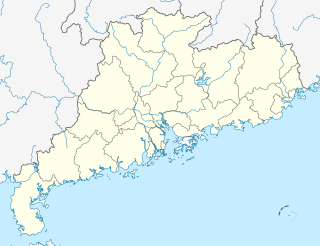 W
WShangba is a village of about 3,300 people administered by Xinjiang Town in Wengyuan County, Guangdong. It is an agricultural village, with rice and sugar cane being major crops. In 2007 the village acquired the nickname China's "Village of Death" due to the extremely high incidence of cancer in its population.
 W
WShangfeng is a village in Yangce (羊册镇), Biyang County, Zhumadian, Henan province, China 7 km (4.3 mi) east of the town of Yangce, which it geographically is part of. It has over 1000 residents, and is surrounded on three sides by mountains. Locals primarily rely on agriculture, mainly growing wheat, soybean, sesame, and peanuts. Cattle and goats are also raised in the area.
 W
WShangjing (help·info) (上境村) is a village located in Tangxi (汤溪镇), Wucheng District, Jinhua, Zhejiang province, China. It is situated about 30km to the west of downtown Jinhua and 2.5 km away from the town of Tangxi. The village is bordered by Yue Stream (越溪) in the east, Houdayuan Stream (厚大源) in the south, and Jiufeng Mountain (九峰山) in the west. The village was formerly known as Fenglinzhuang (枫林庄) or "Maple Forest Village" and changed to the current name due to its "wind and water favourable" location, according to the principles of fengshui characteristics.
 W
WShengyou is a village in Kaiyuan (开元镇) south of the Dingzhou City in Hebei Province, China. On the night of April 20, 2005 and later in the early morning of June 11, 2015, occurred incidents in which over two hundred allegedly hired thugs descended on a village in northern China and clashed with local residents over a land dispute. Seven people were killed and 48 others injured and hospitalized, eight of whom in critical condition. The chaos was captured on video by one of the farmers and later released by Washington Post.
 W
WShuidong is a village of the town of Luohe (洛河镇), Ju County, Rizhao, Shandong Province, China. The dialect of Shuidong is Qingdao dialect.
 W
WTai'an Village is the smallest village under the jurisdiction of Beiwan Town (北湾镇), Jingyuan County, Gansu. It has a total area of 5.1 square kilometres (2.0 sq mi), with 3.8 kilometres (2.4 mi) of roads. As of 2012, the village had 3,832 people in 987 households. Among them 82 are Communist Party members, 17 (20.73%) of those being women. Out of the 3,534 mǔ of land in the village, 157 were devoted to orchards and 955 to vegetable greenhouses; livestock in the village included 5,100 pigs, 1,760 sheep, and 196,400 chickens. Total annual grain production was 2,565 tonnes, while vegetable production was 5,727 tonnes. The per capita net income of farmers had reached 5,200 yuan by that year.
 W
WTaishi Village is a small hamlet, in the town of Dongchong, Nansha District, Guangzhou, Guangdong, formerly in the now-disbanded Yuwotou Town (鱼窝头镇) of Panyu District, Guangzhou. It is best known for being the flashpoint for democratic election reform in the region during 2005.
 W
WTaitou, formerly, is a newly built village in Gaocun township, Wuqing District, Tianjin.
 W
WTaizicheng is a village in Sitaizui (四台嘴乡), Chongli District of Zhangjiakou in the northwest of Hebei Province, China. Its name means "City of the Crown Prince", and archaeological excavations carried out between May and November 2017 uncovered the remains of an imperial palace of the Jin dynasty (1115–1234). It is thought that this was the summer palace for Emperor Zhangzong of Jin, which is named Tai He Palace in the History of Jin.
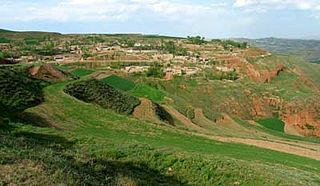 W
WTaktser or Tengtser or Hongya Village is a village in Shihuiyao Township, Ping'an District, Haidong, in the east of Qinghai province, China, known as Amdo. Tibetan, Han and Hui Chinese people populate the village. Also known as Kokonor, it is notable as the birthplace of the 14th Dalai Lama, Tenzin Gyatso.
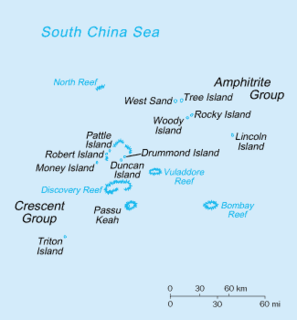 W
WFor the "Tree Island" in Tuen Mun District, New Territories, Hong Kong, see Pak Chau.
 W
WTuyoq or Tuyugou or Tuyuk is an ancient oasis-village in the Taklamakan desert, 70 km east of Turpan in Shanshan County in a lush valley cutting into the Flaming Mountains, with a well preserved Uyghur orientation, and few tourists. It is famous for its seedless grapes and a number of ancient Buddhist meditation caves nearby containing frescos.
 W
WWangtan is a village in Jieji (界集镇), Sihong County, in the northwest of Jiangsu province, China approximately 57 kilometres (35 mi) west of the city of Huai'an.
 W
WWangtang is a village in Jianggu Town (江谷镇) of the county-level city of Sihui, in the prefecture-level city of Zhaoqing, Guangdong Province, China. It is located in the southern part of Jianggu Town, some 4 km from the town center, and has a population of 2570.
 W
WWangtang is a village in Chaotian Township (潮田乡), Lingchuan County, Guilin, Guangxi in the People's Republic of China, about 25 km southeast of Guilin. In 2009, the Guilin city government provided aid to the village, and described it as hilly, relatively high altitude, and prone to water shortages. The elementary school in Wangtang was lacking in funding, and more than 280 students were forced to use old, hard desks as a result.
 W
WWukan is a coastal fishing village in Donghai Subdistrict (东海街道), in the city of Lufeng, Guangdong. It has a population of approximately 13,000 residents, and is located approximately 120 km (75 mi) east of Hong Kong near the South China Sea coast.
 W
WXiaogang Village is a small village in Xiaoxihe (小溪河镇), Fengyang County, Chuzhou, Anhui province in China, not far from Nanjing. China's move toward reform has been traced to an agreement among farmers in Xiaogang to secretly subdivide their common farmland in December 1978, after which the production of grain increased dramatically. The village was held up as a model for agricultural reform by China's new leadership after Deng Xiaoping came to power.
 W
WXiaori Island is an island off the Asian mainland in Xiaori Village (小日村), Nanri Town, Xiuyu District, Putian, Fujian, China (PRC).
 W
WXia Tun is located in Guozhuang (果庄镇), Ju County, Rizhao, Shandong Province, China. The dialect of Xia Tun is Qingdao dialect.
 W
WXidi is a village in Xidi Town (西递镇), Yi County, Huangshan City of the historical Huizhou region of Anhui province, China. It was declared a part of the "Ancient Villages in Southern Anhui" World Heritage Site by UNESCO in 2000, along with Hongcun.
 W
WXinye is a historic village in Daciyan Town (大慈岩镇), Jiande City, Hangzhou, in the west of Zhejiang Province. Founded in the Southern Song dynasty, Xinye is noted for its well-preserved Ming and Qing era architecture and ancient residential buildings. Xinye is also known for holding ancestor worship ceremonies on the annual Shangsi Festival, an ancient tradition that is only practiced by a few communities in China today, including Xinye. In 2010 it was designated as a National Historic and Cultural Village of China.
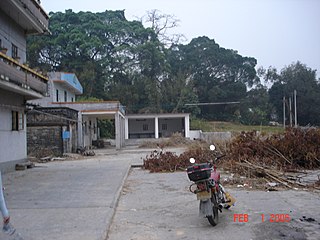 W
WXiqi village (西岐村) is located in the town of Shuibu, in Taishan City, Jiangmen, Guangdong Province, southern China. Decades ago the village had 1,000 villagers but was almost completely depopulated by emigration to the United States such that fewer than 50 villagers today. It can therefore be viewed as the ancestral village of thousands of overseas Chinese throughout the Chinese diaspora, particularly in San Francisco, Chicago, Seattle, and Vancouver.
 W
WYagong Island is an island in the Crescent Group of the Paracel Islands, in the South China Sea. It is also known as "He Duck",, due to its shape. It is located a few hundred metres southwest of Observation Bank in the northeast of the Crescent Group.
 W
WZhangguying Village is an ancient village. Located in Zhangguying Town, Yueyang County, Hunan Province, the village is named after the forefather Zhang Guying. it is famous for its ancient building complex (古建筑群) in the Ming and Qing dynasties. As vernacular residence in scale in the South Central China, the ancient building complex is the best preserved in China; Constructed broadly in scale and decorated splendidly, it covers more than 50,000 m2 (540,000 sq ft) with 1,732 rooms, the complex has been placed on the list of Major Historical and Cultural Site Protected at the National Level on June 25, 2001. The village was also included on the first batch list of National Famous Historical and Cultural Villages on October 8, 2003; and became one of AAAA-rated tourist attractions on December 18, 2014.
 W
WZhelaizhai is a village on the edge of the Gobi desert in Gansu province, China. The area was renamed after Liqian, an ancient county, and is located in Jiaojiazhuang township, Yongchang County. Some of the modern-day residents of Zhelaizhai, now known as Liqian village, have been suspected to be descendants of a group Roman soldiers that were never accounted for after being captured in the Battle of Carrhae. Although this story has been seized upon by enthusiastic area residents and non-specialist Westerners, at least two eminent Chinese authorities have shown that the notion has serious shortcomings.
 W
WZhuangjiashan is a small village in Dongguan (东莞镇), northern Ju County, Shandong province, China. In 1988, a site containing historical relics of the Shang Dynasty was discovered 50 meters to the south of the village.
 W
WZhufan (simplified Chinese: 朱范; traditional Chinese: 朱範; pinyin: zhūfàn, local accent:zhuf, or Juf) also called West Zhufan or Xizhufan, is an administrative village governed by Shilianghe Town (石梁河镇) of Donghai County, in the northof Jiangsu Province, China.
 W
WZhuge Village or Zhugecun is a historic village located in Zhuge (诸葛镇), Lanxi, Jinhua, Zhejiang Province, China. Originally called Gaolong (高隆), the village changed its name to Zhuge during the Ming Dynasty due to the prevalence of the Zhuge surname among the villagers. The residents claim they are the descendants of the famed Shu Han chancellor Zhuge Liang of the 3rd century CE. The village was designated a national heritage site in 1996, and contains relics which are 700 years old.
 W
WZhujiayu is a village in Guanzhuang Subdistrict (官庄街道), Zhangqiu, Jinan, Shandong Province, China that is renowned for the preservation of its historical buildings dating to the Ming and Qing Dynasties. The village is located about 45 km to the east of the provincial capital Jinan and falls under the administration of the county-level city of Zhangqiu.